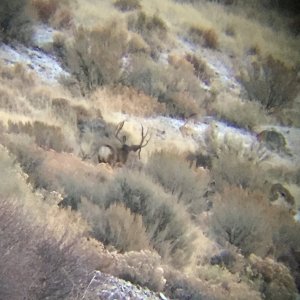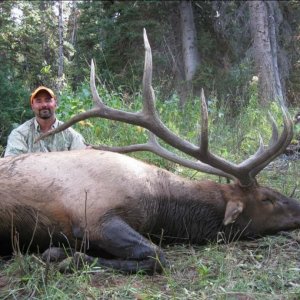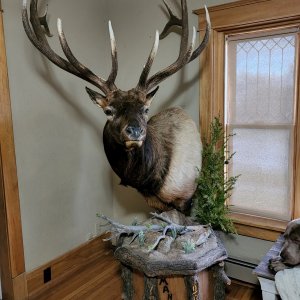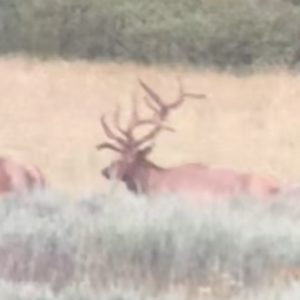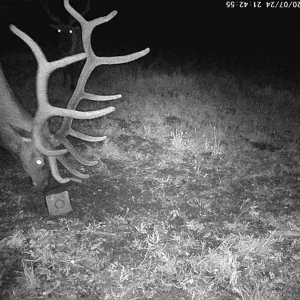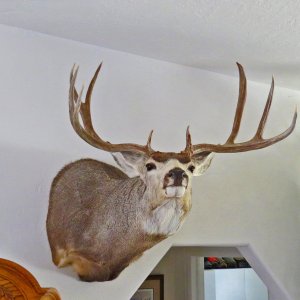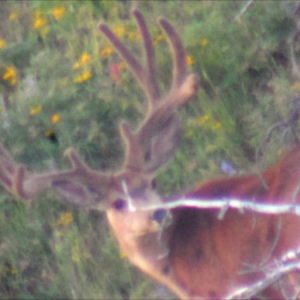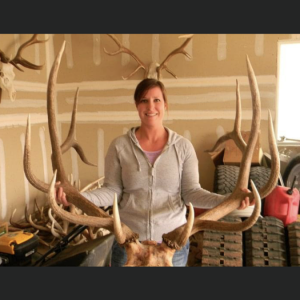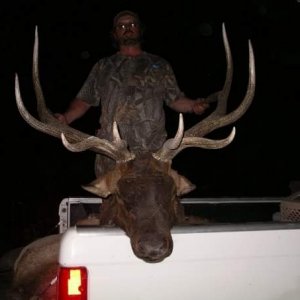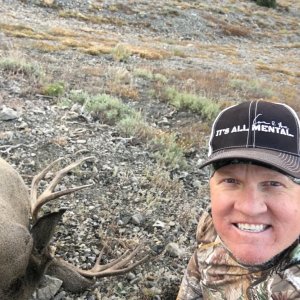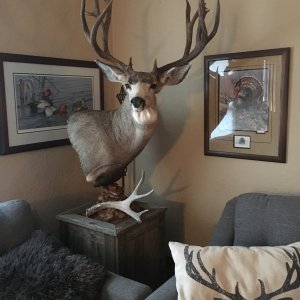tailchasers
Long Time Member
- Messages
- 5,472
Seen this posted over in the Colorado forum and its not all that great of news to share but know there is bunch of you all that will be interested. Lets hope for some warmer temps.
________________
CPW News Release
2/5/2016
Colorado Parks and Wildlife monitoring severe winter conditions, impacts to wildlife a concern
FOR IMMEDIATE RELEASE
Mike Porras
CPW NW Region PIO
970-255-6162
Colorado Parks and Wildlife monitoring severe winter conditions, impacts to wildlife a concern
MEEKER, Colo. - Colorado Parks and Wildlife managers in the state's Northwest Region say the most recent blast of snow and frigid temperatures has created conditions similar to some of the most extreme winters in the state during the past 35 years. With temperatures dropping well below zero and deep, powdered snow drifts layered over crust limiting big game's access to available forage, CPW officials say conditions could lead to increased wildlife mortality in portions of the region unless the weather moderates significantly.
The area experiencing the most severe impacts includes Moffat, Routt and Rio Blanco counties. Eagle, Garfield and Jackson counties have developed severe winter conditions more recently and managers in Grand and Summit counties are also expressing concern.
"I've just returned from a tour of the area and based on what I saw, we will likely see some significant impacts to wildlife," said CPW Regional Manager Ron Velarde. "But people need to understand that, despite how damaging conditions are right now, wildlife has been experiencing and surviving severe weather for eons without human intervention, so it's important to have the proper perspective."
Colorado Parks and Wildlife's Northwest Region is home to moose, mule deer, greater sage-grouse, elk, pronghorn and many other species that may be affected; however, the impact to the mule deer population is a specific concern. Over the last decade, the species has seen a continued drop in numbers in parts of Colorado and across the Western United States due to a variety of factors.
Wildlife officials say that many species, especially deer, were in excellent physical condition heading into winter due to good moisture and the subsequent abundance of summer forage, and Western Colorado had been experiencing mild winter conditions until just before Christmas. In addition, CPW's multi-faceted mule deer management program has been yielding positive results. Although their overall numbers are well below objective, survival rates of adult and fawn mule deer in northwestern Colorado have been very high during the last few mild winters.
Nevertheless a drop in numbers where winter conditions are the most severe is expected this year.
According to Area Wildlife Manager Bill de Vergie of Meeker, the severe winter has led to numerous reports of conflicts, primarily elk and deer entering private land and causing damage to haystacks and utilizing cattle feed lines.
"All we can do is respond as best we can on a case-by-case basis while nature takes its course," he said. "We can usually influence many of the threats to deer populations using a variety of management actions, but we have no control over weather. In fact it has been the the absence of severe winters and drought that has allowed the deer to obtain good health prior to this winter."
Although wildlife managers are using limited amounts of hay and other types of feed to bait wildlife away from livestock feed grounds on private property, the agency has received numerous inquiries from the public suggesting that a large-scale feeding program be implemented to address potential starvation.
"By policy, certain conditions have to be met before an emergency feeding program can be considered and we are not there yet," said Velarde. "But what is very important for the public to understand is that, although we may see short term effects from feeding, our experience has shown that it has had limited long-term benefits overall."
Velarde adds that feeding operations in areas where chronic wasting disease has been detected, including many areas within the Northwest Region, can only be approved by the CPW Commission. It limits emergency winter feeding for mule deer to those areas where winter mortality of adult female deer is expected to exceed 30 percent.
According to Senior Terrestrial Biologist Brad Petch, the agency is monitoring adult doe and fawn survival with several hundred radio-collars. In addition, CPW personnel are conducting extensive visual observations of herds and inspections of carcasses to determine body condition and cause of death. Based on current observations, mortality is less than 10 percent.
"That percentage can certainly change quickly under such conditions," said Petch. "Our personnel are keeping a very close watch on conditions and mortality, and we will continue to do so through the rest of the winter."
Colorado Parks and Wildlife reminds the public that feeding wildlife at any time can be very detrimental to their long-term survival, in addition to being illegal. Some non-natural foods can lead to severe digestive ailments that can cause death in ungulates like mule deer and elk. Feeding concentrates wildlife, increasing the likelihood of disease transmission. In addition, it can lead to a dependency on human-provided foods, change natural migration patterns and attract predators.
"We understand that people want to help in situations like these," said Velarde. "But feeding should only be done by professionals, if it's done at all. If people take matters into their own hands, it will likely do more harm than good, leading to wildlife deaths, and can also result in citations and fines."
Velarde adds that the most effective way for people to help wildlife stressed by winter conditions is to limit activities on winter ranges, where deer and elk are finding shelter and foraging for what food remains available. Human-caused disturbance leads wildlife to expend critical energy necessary for survival during the coldest time of the year, he said.
To learn more about mule deer and Colorado's effort to address their decline, see Colorado's West Slope Mule Deer Strategy.
http://cpw.state.co.us/aboutus/Pages/News-Release-Details.aspx?NewsID=5677
"Courage is being scared to death but
saddling up anyway."
________________
CPW News Release
2/5/2016
Colorado Parks and Wildlife monitoring severe winter conditions, impacts to wildlife a concern
FOR IMMEDIATE RELEASE
Mike Porras
CPW NW Region PIO
970-255-6162
Colorado Parks and Wildlife monitoring severe winter conditions, impacts to wildlife a concern
MEEKER, Colo. - Colorado Parks and Wildlife managers in the state's Northwest Region say the most recent blast of snow and frigid temperatures has created conditions similar to some of the most extreme winters in the state during the past 35 years. With temperatures dropping well below zero and deep, powdered snow drifts layered over crust limiting big game's access to available forage, CPW officials say conditions could lead to increased wildlife mortality in portions of the region unless the weather moderates significantly.
The area experiencing the most severe impacts includes Moffat, Routt and Rio Blanco counties. Eagle, Garfield and Jackson counties have developed severe winter conditions more recently and managers in Grand and Summit counties are also expressing concern.
"I've just returned from a tour of the area and based on what I saw, we will likely see some significant impacts to wildlife," said CPW Regional Manager Ron Velarde. "But people need to understand that, despite how damaging conditions are right now, wildlife has been experiencing and surviving severe weather for eons without human intervention, so it's important to have the proper perspective."
Colorado Parks and Wildlife's Northwest Region is home to moose, mule deer, greater sage-grouse, elk, pronghorn and many other species that may be affected; however, the impact to the mule deer population is a specific concern. Over the last decade, the species has seen a continued drop in numbers in parts of Colorado and across the Western United States due to a variety of factors.
Wildlife officials say that many species, especially deer, were in excellent physical condition heading into winter due to good moisture and the subsequent abundance of summer forage, and Western Colorado had been experiencing mild winter conditions until just before Christmas. In addition, CPW's multi-faceted mule deer management program has been yielding positive results. Although their overall numbers are well below objective, survival rates of adult and fawn mule deer in northwestern Colorado have been very high during the last few mild winters.
Nevertheless a drop in numbers where winter conditions are the most severe is expected this year.
According to Area Wildlife Manager Bill de Vergie of Meeker, the severe winter has led to numerous reports of conflicts, primarily elk and deer entering private land and causing damage to haystacks and utilizing cattle feed lines.
"All we can do is respond as best we can on a case-by-case basis while nature takes its course," he said. "We can usually influence many of the threats to deer populations using a variety of management actions, but we have no control over weather. In fact it has been the the absence of severe winters and drought that has allowed the deer to obtain good health prior to this winter."
Although wildlife managers are using limited amounts of hay and other types of feed to bait wildlife away from livestock feed grounds on private property, the agency has received numerous inquiries from the public suggesting that a large-scale feeding program be implemented to address potential starvation.
"By policy, certain conditions have to be met before an emergency feeding program can be considered and we are not there yet," said Velarde. "But what is very important for the public to understand is that, although we may see short term effects from feeding, our experience has shown that it has had limited long-term benefits overall."
Velarde adds that feeding operations in areas where chronic wasting disease has been detected, including many areas within the Northwest Region, can only be approved by the CPW Commission. It limits emergency winter feeding for mule deer to those areas where winter mortality of adult female deer is expected to exceed 30 percent.
According to Senior Terrestrial Biologist Brad Petch, the agency is monitoring adult doe and fawn survival with several hundred radio-collars. In addition, CPW personnel are conducting extensive visual observations of herds and inspections of carcasses to determine body condition and cause of death. Based on current observations, mortality is less than 10 percent.
"That percentage can certainly change quickly under such conditions," said Petch. "Our personnel are keeping a very close watch on conditions and mortality, and we will continue to do so through the rest of the winter."
Colorado Parks and Wildlife reminds the public that feeding wildlife at any time can be very detrimental to their long-term survival, in addition to being illegal. Some non-natural foods can lead to severe digestive ailments that can cause death in ungulates like mule deer and elk. Feeding concentrates wildlife, increasing the likelihood of disease transmission. In addition, it can lead to a dependency on human-provided foods, change natural migration patterns and attract predators.
"We understand that people want to help in situations like these," said Velarde. "But feeding should only be done by professionals, if it's done at all. If people take matters into their own hands, it will likely do more harm than good, leading to wildlife deaths, and can also result in citations and fines."
Velarde adds that the most effective way for people to help wildlife stressed by winter conditions is to limit activities on winter ranges, where deer and elk are finding shelter and foraging for what food remains available. Human-caused disturbance leads wildlife to expend critical energy necessary for survival during the coldest time of the year, he said.
To learn more about mule deer and Colorado's effort to address their decline, see Colorado's West Slope Mule Deer Strategy.
http://cpw.state.co.us/aboutus/Pages/News-Release-Details.aspx?NewsID=5677
"Courage is being scared to death but
saddling up anyway."

